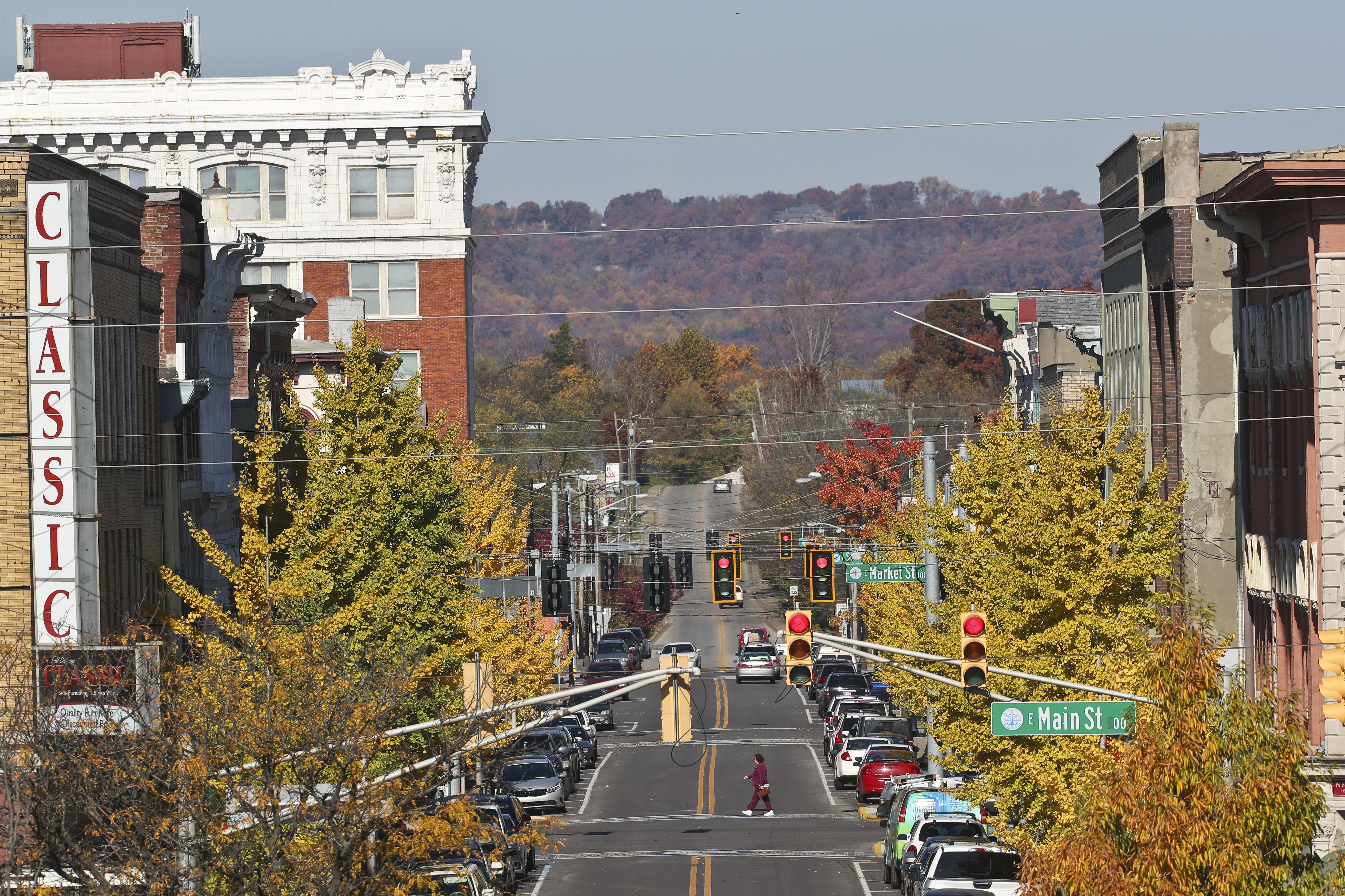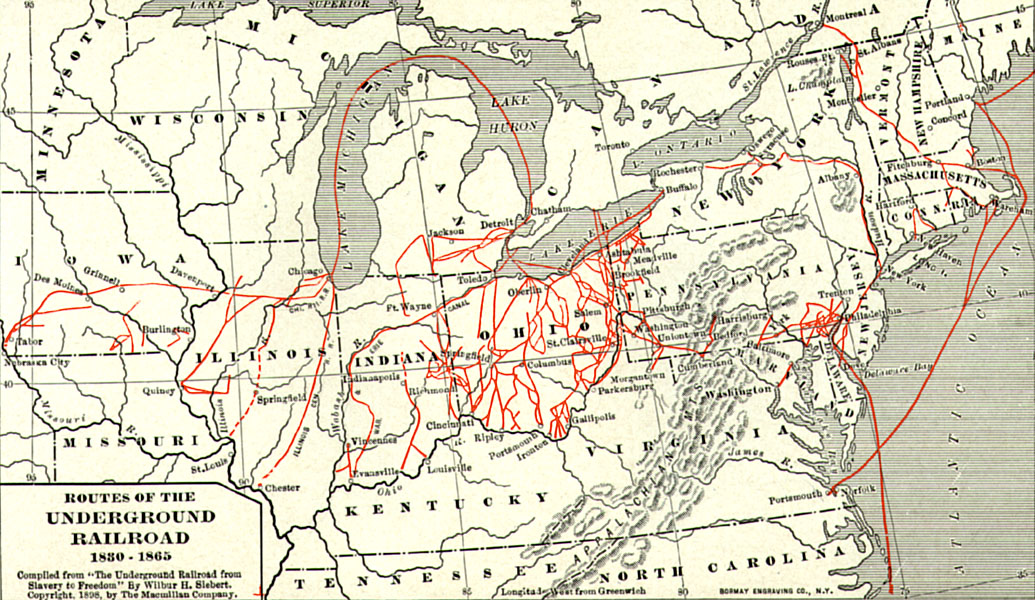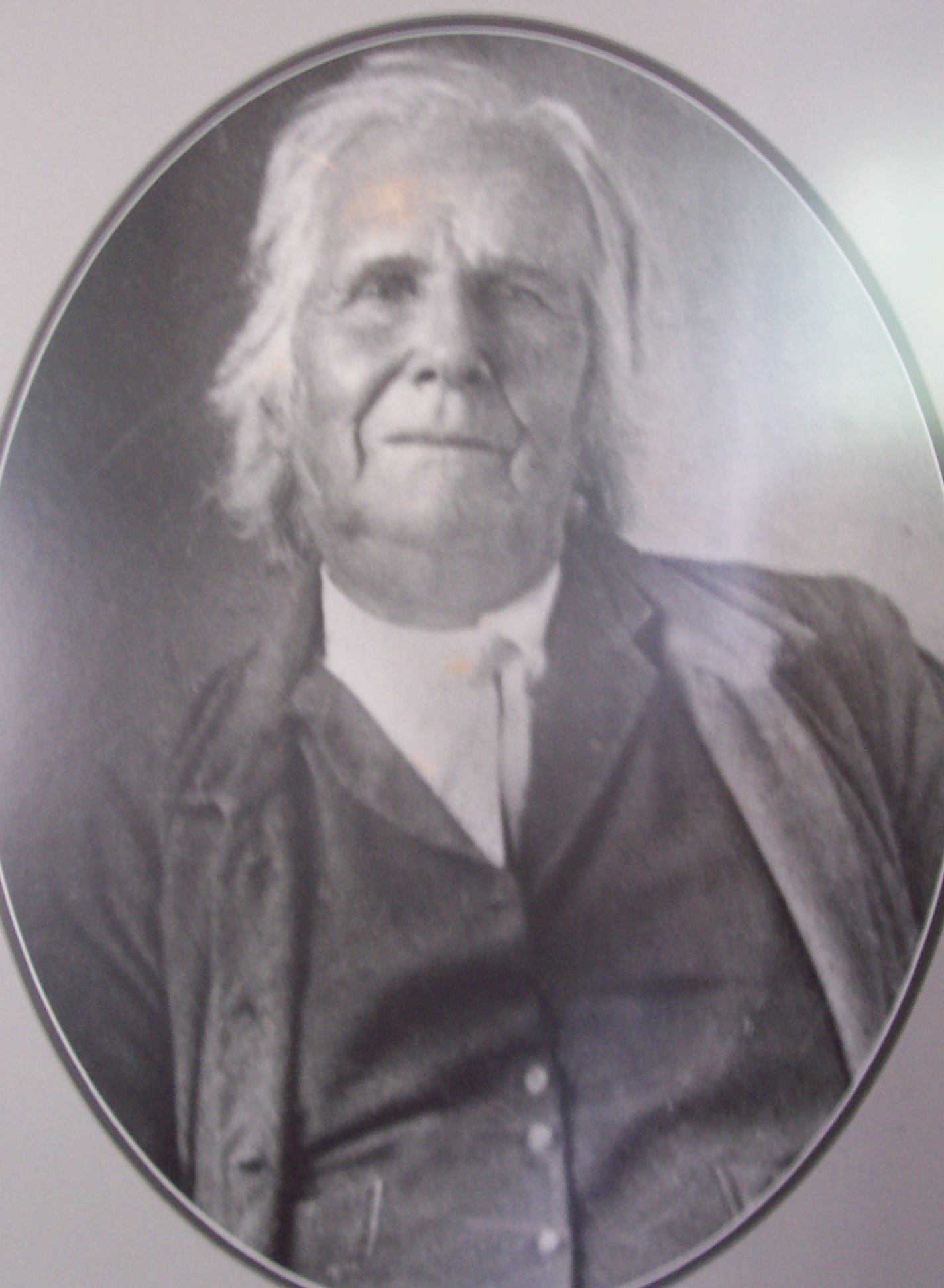|
Town Clock Church
The Town Clock Church, now the Second Baptist Church of New Albany, Indiana, United States, is a historic church located at 300 East Main Street, within the New Albany Downtown Historic District. It was constructed in 1852 as Second Presbyterian Church, in what was then the largest city in Indiana. It is near the Ohio River, across the border from Louisville, Kentucky. It was a station on the Underground Railroad. The church is brick, and is constructed in the Greek Revival style of architecture. It previously had a 160-foot high clock tower that could be seen by boat crews on the Ohio River. However, the tower has been shortened. The first phase of reconstruction is underway which will include a new steeple and clock faces. When reconstruction is complete, the tower will once again be 160 feet tall. References External links Second Baptist short history* List of Underground Railroad sites The list of Underground Railroad sites includes abolitionist locations of sanct ... [...More Info...] [...Related Items...] OR: [Wikipedia] [Google] [Baidu] |
New Albany, Indiana
New Albany is a city in Floyd County, Indiana, United States, situated along the Ohio River, opposite Louisville, Kentucky. The population was 37,841 as of the 2020 census. The city is the county seat of Floyd County. It is bounded by I-265 to the north and the Ohio River to the south, and is considered part of the Louisville, Kentucky Metropolitan Statistical Area. The mayor of New Albany is Jeff Gahan, a Democrat; he was re-elected in 2019. History Early history The land of New Albany was officially granted to the United States after the American Revolutionary War. The territory had been captured by George Rogers Clark in 1779. For his services Clark was awarded large tracts of land in Southern Indiana including most of Floyd County. After the war Clark sold and distributed some of his land to his fellow soldiers. The area of New Albany ended up in the possession of Col. John Paul. New Albany was founded in July 1813 when three brothers from New York —Joel, Abner, ... [...More Info...] [...Related Items...] OR: [Wikipedia] [Google] [Baidu] |
New Albany Downtown Historic District (New Albany, Indiana)
The New Albany Downtown Historic District is a national historic district located at New Albany, Indiana. The general area is W. First Street to the west, Spring St. to the north, E. Fifth Street to the east, and Main Street to the south. The local specification of the district is between East Fifth Street to West Fifth Street, Culbertson Street to the north, and the Ohio River to the south. East Spring Street Historic District is immediately east of the area, and the Main Street section of the Mansion Row Historic District starts. The area includes the Scribner House, where the founders of New Albany lived. ''Note:'' This includes and Accompanying photographs. It is also the focal area of the Harvest Homecoming Festival every October. Architectural styles vary, including Beaux-Arts, Chicago Commercial, Federal, Greek Revival, Italianate, Neoclassical, and Renaissance Revival. Prominent buildings in the district include: *Elsby Building (1916, Neoclassical) *Fireston ... [...More Info...] [...Related Items...] OR: [Wikipedia] [Google] [Baidu] |
Louisville, Kentucky
Louisville ( , , ) is the largest city in the Commonwealth of Kentucky and the 28th most-populous city in the United States. Louisville is the historical seat and, since 2003, the nominal seat of Jefferson County, on the Indiana border. Named after King Louis XVI of France, Louisville was founded in 1778 by George Rogers Clark, making it one of the oldest cities west of the Appalachians. With nearby Falls of the Ohio as the only major obstruction to river traffic between the upper Ohio River and the Gulf of Mexico, the settlement first grew as a portage site. It was the founding city of the Louisville and Nashville Railroad, which grew into a system across 13 states. Today, the city is known as the home of boxer Muhammad Ali, the Kentucky Derby, Kentucky Fried Chicken, the University of Louisville and its Cardinals, Louisville Slugger baseball bats, and three of Kentucky's six ''Fortune'' 500 companies: Humana, Kindred Healthcare, and Yum! Brands. Muhamma ... [...More Info...] [...Related Items...] OR: [Wikipedia] [Google] [Baidu] |
Underground Railroad
The Underground Railroad was a network of clandestine routes and safe houses established in the United States during the early- to mid-19th century. It was used by enslaved African Americans primarily to escape into free states and Canada. The network was assisted by abolitionists and others sympathetic to the cause of the escapees. The enslaved persons who risked escape and those who aided them are also collectively referred to as the "Underground Railroad". Various other routes led to Mexico, where slavery had been abolished, and to islands in the Caribbean that were not part of the slave trade. An earlier escape route running south toward Florida, then a Spanish possession (except 1763–1783), existed from the late 17th century until approximately 1790. However, the network now generally known as the Underground Railroad began in the late 18th century. It ran north and grew steadily until the Emancipation Proclamation was signed by President Abraham Lincoln.Vox, Lisa"H ... [...More Info...] [...Related Items...] OR: [Wikipedia] [Google] [Baidu] |
List Of Underground Railroad Sites
The list of Underground Railroad sites includes abolitionist locations of sanctuary, support, and transport for former slaves in 19th century North America before and during the American Civil War. It also includes sites closely associated with people who worked to achieve personal freedom for all Americans in the movement to end slavery in the United States. The list of validated or authenticated Underground Railroad and Network to Freedom sites is sorted within state or province, by location. Canada The Act Against Slavery of 1793 stated that any enslaved person would become free on arrival in Upper Canada. A network of routes led from the United States to Upper and Lower Canada. Ontario # Amherstburg Freedom Museum – Amherstburg. The museum uses historical artifacts, Black heritage exhibits, and video presentations to share the story of how Africans were forced into slavery and the made their way to Canada. # Fort Malden – Amherstburg One of the routes to Ontario wa ... [...More Info...] [...Related Items...] OR: [Wikipedia] [Google] [Baidu] |
Buildings And Structures In New Albany, Indiana
A building, or edifice, is an enclosed structure with a roof and walls standing more or less permanently in one place, such as a house or factory (although there's also portable buildings). Buildings come in a variety of sizes, shapes, and functions, and have been adapted throughout history for a wide number of factors, from building materials available, to weather conditions, land prices, ground conditions, specific uses, prestige, and aesthetic reasons. To better understand the term ''building'' compare the list of nonbuilding structures. Buildings serve several societal needs – primarily as shelter from weather, security, living space, privacy, to store belongings, and to comfortably live and work. A building as a shelter represents a physical division of the human habitat (a place of comfort and safety) and the ''outside'' (a place that at times may be harsh and harmful). Ever since the first cave paintings, buildings have also become objects or canvasses of much artistic ... [...More Info...] [...Related Items...] OR: [Wikipedia] [Google] [Baidu] |
Churches On The Underground Railroad
Church may refer to: Religion * Church (building), a building for Christian religious activities * Church (congregation), a local congregation of a Christian denomination * Church service, a formalized period of Christian communal worship * Christian denomination, a Christian organization with distinct doctrine and practice * Christian Church, either the collective body of all Christian believers, or early Christianity Places United Kingdom * Church (Liverpool ward), a Liverpool City Council ward * Church (Reading ward), a Reading Borough Council ward * Church (Sefton ward), a Metropolitan Borough of Sefton ward * Church, Lancashire, England United States * Church, Iowa, an unincorporated community * Church Lake, a lake in Minnesota Arts, entertainment, and media * ''Church magazine'', a pastoral theology magazine published by the National Pastoral Life Center Fictional entities * Church (''Red vs. Blue''), a fictional character in the video web series ''Red vs. Blue'' * ... [...More Info...] [...Related Items...] OR: [Wikipedia] [Google] [Baidu] |
Churches On The National Register Of Historic Places In Indiana
Church may refer to: Religion * Church (building), a building for Christian religious activities * Church (congregation), a local congregation of a Christian denomination * Church service, a formalized period of Christian communal worship * Christian denomination, a Christian organization with distinct doctrine and practice * Christian Church, either the collective body of all Christian believers, or early Christianity Places United Kingdom * Church (Liverpool ward), a Liverpool City Council ward * Church (Reading ward), a Reading Borough Council ward * Church (Sefton ward), a Metropolitan Borough of Sefton ward * Church, Lancashire, England United States * Church, Iowa, an unincorporated community * Church Lake, a lake in Minnesota Arts, entertainment, and media * ''Church magazine'', a pastoral theology magazine published by the National Pastoral Life Center Fictional entities * Church (''Red vs. Blue''), a fictional character in the video web series ''Red vs. Blue'' * ... [...More Info...] [...Related Items...] OR: [Wikipedia] [Google] [Baidu] |
National Register Of Historic Places In Floyd County, Indiana
__NOTOC__ This is a list of the National Register of Historic Places listings in Floyd County, Indiana. This is intended to be a complete list of the properties and districts on the National Register of Historic Places in Floyd County, Indiana, United States. Latitude and longitude coordinates are provided for many National Register properties and districts; these locations may be seen together in an online map. There are 24 properties and districts listed on the National Register in the county. Another 3 properties were once listed but have been removed. Properties and districts located in incorporated areas display the name of the municipality, while properties and districts in unincorporated areas display the name of their civil township. Properties and districts split between multiple jurisdictions display the names of all jurisdictions. Current listings Former listings See also * List of National Historic Landmarks in Indiana * Natio ... [...More Info...] [...Related Items...] OR: [Wikipedia] [Google] [Baidu] |
Clock Towers In Indiana
A clock or a timepiece is a device used to measure and indicate time. The clock is one of the oldest human inventions, meeting the need to measure intervals of time shorter than the natural units such as the day, the lunar month and the year. Devices operating on several physical processes have been used over the millennia. Some predecessors to the modern clock may be considered as "clocks" that are based on movement in nature: A sundial shows the time by displaying the position of a shadow on a flat surface. There is a range of duration timers, a well-known example being the hourglass. Water clocks, along with the sundials, are possibly the oldest time-measuring instruments. A major advance occurred with the invention of the verge escapement, which made possible the first mechanical clocks around 1300 in Europe, which kept time with oscillating timekeepers like balance wheels., pp. 103–104., p. 31. Traditionally, in horology, the term ''clock'' was used for a ... [...More Info...] [...Related Items...] OR: [Wikipedia] [Google] [Baidu] |
Underground Railroad In Indiana
The Underground Railroad in Indiana was part of a larger, unofficial, and loosely-connected network of groups and individuals who aided and facilitated the escape of runaway slaves from the southern United States. The network in Indiana gradually evolved in the 1830s and 1840s, reached its peak during the 1850s, and continued until slavery was abolished throughout the United States at the end of the American Civil War in 1865. It is not known how many fugitive slaves escaped through Indiana on their journey to Michigan and Canada. An unknown number of Indiana's abolitionists, anti-slavery advocates, and people of color, as well as Quakers and other religious groups illegally operated stations (safe houses) along the network. Some of the network's operatives have been identified, including Levi Coffin, the best-known of Indiana's Underground Railroad leaders. In addition to shelter, network agents provided food, guidance, and, in some cases, transportation to aid the runaways. Most o ... [...More Info...] [...Related Items...] OR: [Wikipedia] [Google] [Baidu] |
Historic District Contributing Properties In Indiana
History (derived ) is the systematic study and the documentation of the human activity. The time period of event before the invention of writing systems is considered prehistory. "History" is an umbrella term comprising past events as well as the memory, discovery, collection, organization, presentation, and interpretation of these events. Historians seek knowledge of the past using historical sources such as written documents, oral accounts, art and material artifacts, and ecological markers. History is not complete and still has debatable mysteries. History is also an academic discipline which uses narrative to describe, examine, question, and analyze past events, and investigate their patterns of cause and effect. Historians often debate which narrative best explains an event, as well as the significance of different causes and effects. Historians also debate the nature of history as an end in itself, as well as its usefulness to give perspective on the problems of the p ... [...More Info...] [...Related Items...] OR: [Wikipedia] [Google] [Baidu] |






.jpg)